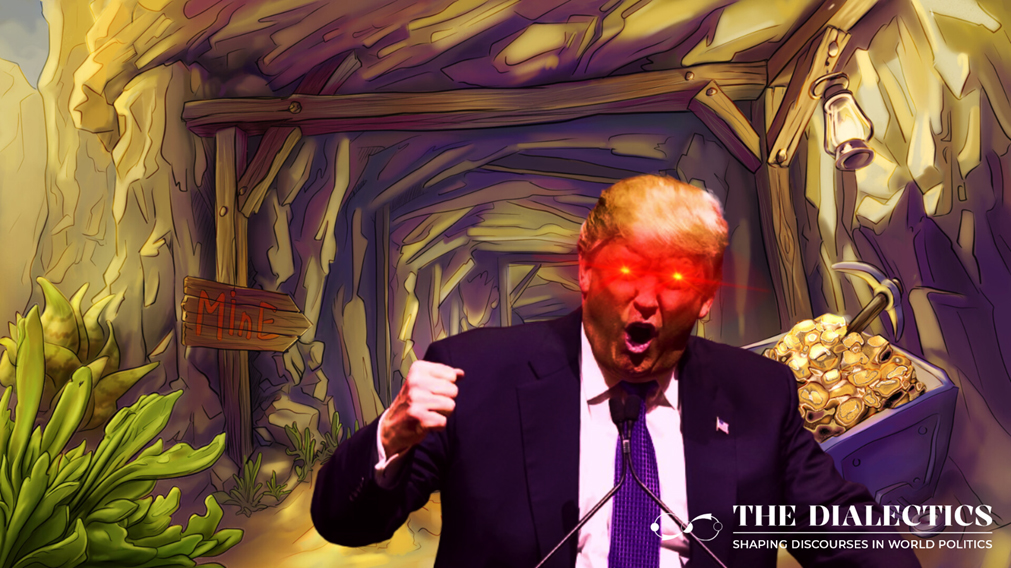Amidst realignment with its old Western partners while carefully preserving its ‘all weather friend’ China, Pakistan has forcefully placed itself back on the international stage. At the heart of this recalibration that makes the negotiation table hated is Baluchistan – the long neglected yet resource rich frontier, the new El Dorado, known for its massive gold and copper reserves. This article talks about the economic importance of Baluchistan, and how Pakistan uses it as its bargaining chip to engage both powers, China and the US, keeping in account its fragile economy. However, the real question here is ‘will the US be able to crack the code amidst the nationalist militancy of the Baloch?’
How Significant is Baluchistan?
Before diving into the geo-economic tug of war among the international giants in the region, we shall have a glance on the mineral wealth of Baluchistan. It is learnt that Baluchistan is one of the largest Gold and Copper reserves in the world. The infamous Reko Diq mine, situated in Chagai District of Baluchistan, is home to an estimated deposit of over 400 million tones Gold. Apart from Gold and Copper, the region also has large reserves of other critical minerals, especially Lithium. This abundance of mineral wealth has made the region both significant as well as vulnerable.
Barrick Corporation, which owns 50% (the remaining 50% owned by the Pakistan Government) of the Reko Diq mining Company (RMDC), has recently secured nearly $5.5 Bn USD from various international financial institutions, including ADB and World Bank. With this positive development, Pakistan is hoping to save itself from the economic abyss that it is struggling to rise up from for quite a long time.
We all know that the US is relatively a new entrant to the game, whereas China is in the region for a decade since the launch of CPEC. So, how far has China’s presence in Baluchistan has improved the livelihood of the locals?
China in Baluchistan
The surging anti-China sentiments among the Baloch Pakistanis answer the above question. This can be corroborated with the increase in recent attacks on Chinese investments and on Chinese citizens by the BLA (Bloch Liberation Army). In fact, a study indicates that, particularly after 2016, there is an increasing trend in terrorism activities by Ethno-national extremist groups outpacing the Islamist terrorists.

According to Prof. Pema Gyalpo of Takushoku University, Japan , the Pakistanis are viewing CPEC less as a means of development and more as a tool of Chinese expansion in South Asia and exploitation of their mineral resources. Adding to this, the promised jobs are in turn absorbed by the Chinese nationals and not the local residents, leaving the question of who really benefits from these projects.
Pakistan’s Economy
Pakistanis are concerned that the CPEC has only deepened their debt. Islamabad’s external debt is soaringly high as it was 35% of its National GDP. Pakistan is the fifth highest debtor of the IMF and it is known to have received bailouts from the IMF recently. With the US-Pakistan ties having now renewed with greater hopes, Pakistan is now aiming to diversify its economic dependency. Also, Saudi Arabia has also shown interest in the mining business in Baluchistan.
These positive developments have given a new ray of hope to Pakistan’s economy to rise from chronic stagnation. The US in the recent decade had its relations with Pakistan coloured with Security and counter terrorism as the main concerns of the region. But why is the renewed interest and what has pushed the US to reshape its strategy with Pakistan?
Why does the US show sudden interest?
China currently dominates the critical supply chain. China holds 40% of the world’s supply of Copper, one of the essential critical minerals. China as a response to Trump’s tariff policies, announced export restriction on rare earth minerals to show its dominance in the sector. This has raised alarms in the Washington to secure its own supply of critical and rare minerals as an alternate to its dependency on China. Pakistan may not be a complete alternate, but it is definitely a significant one.
The Real challenge for the US
Though the government of Pakistan is all set to make red carpet invitation to the US, the real problem for US is not Infrastructure, supply chain or logistics. It is rather politics, the Ethno-nationalism of the Bloch people.
As mentioned above, the recent targets of the extremist groups are the Chinese investments and Chinese citizens. They know that targeting Chinese citizens will put Pakistan under pressure from China to secure and safeguard its citizens. This will in turn bring the Pakistan government to negotiation table with the Nationalist groups.
Baluchistan people’s experience with China has made them only more cautious and rigid toward foreign investments. China was focusing more on its own interests and there weren’t any developments. It had only contributed to impoverishment and further inequality in the region. The investment projects were militarised by Pakistan Army and is kept away from the access to locals.
Gwadar port, the crown and pivot of the CPEC has also been a hub for protests and frustrations of locals. In addition to the jobs being given to Chinese nationals, Gwadar is so militarised that the locals must undergo security checks even to access basic amenities, leaving the locals only to be more frustrated.
With all this in account, the US has to play a more constructive role in the region. Satisfying the locals’ needs and at the same time achieving its objective of mineral extraction. Even if the US shows its utmost benevolence and generosity in uplifting the local community, it cannot be guaranteed that its investments may go unbothered. Due to increased attacks on its citizens, China has already placed its security agencies to safeguard them. If the US has to follow the same later, then Pakistan will be caught between two armed giant rivals. This will certainly lead to a greater threat to Pakistan’s sovereignty.
Moreover, Gwadar, a deep-sea port, is being developed by China. And Gwadar, being the nearest port from the Chagai region, will the US come into a mutual understanding with China and share the port? Then it will imply that the US not only approves but also becomes a party to China’s ambitious BRI. Will it not be paradoxical, as in the first place, the US comes to Pakistan to find an alternative to its dependency on China for minerals? Or will US develop another new port for its logistical needs. In addition to this, will the US be able to crack the code in taming the Ethno-nationalism of Baluchistan and still secure its operations? Only the US, with all these questions answered, can enter the zone.




